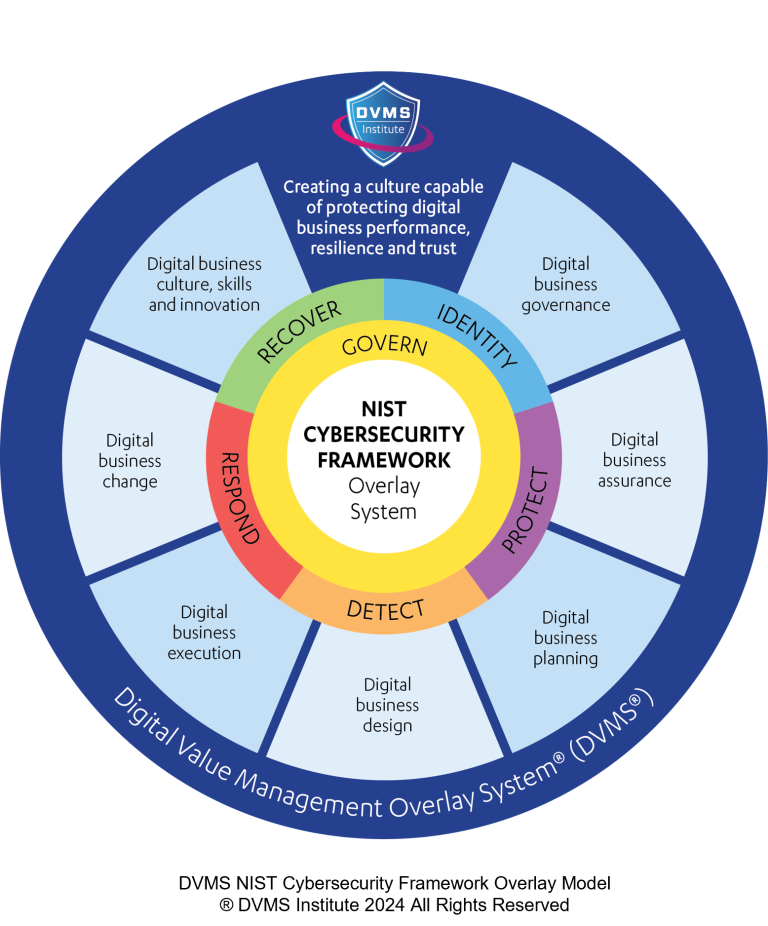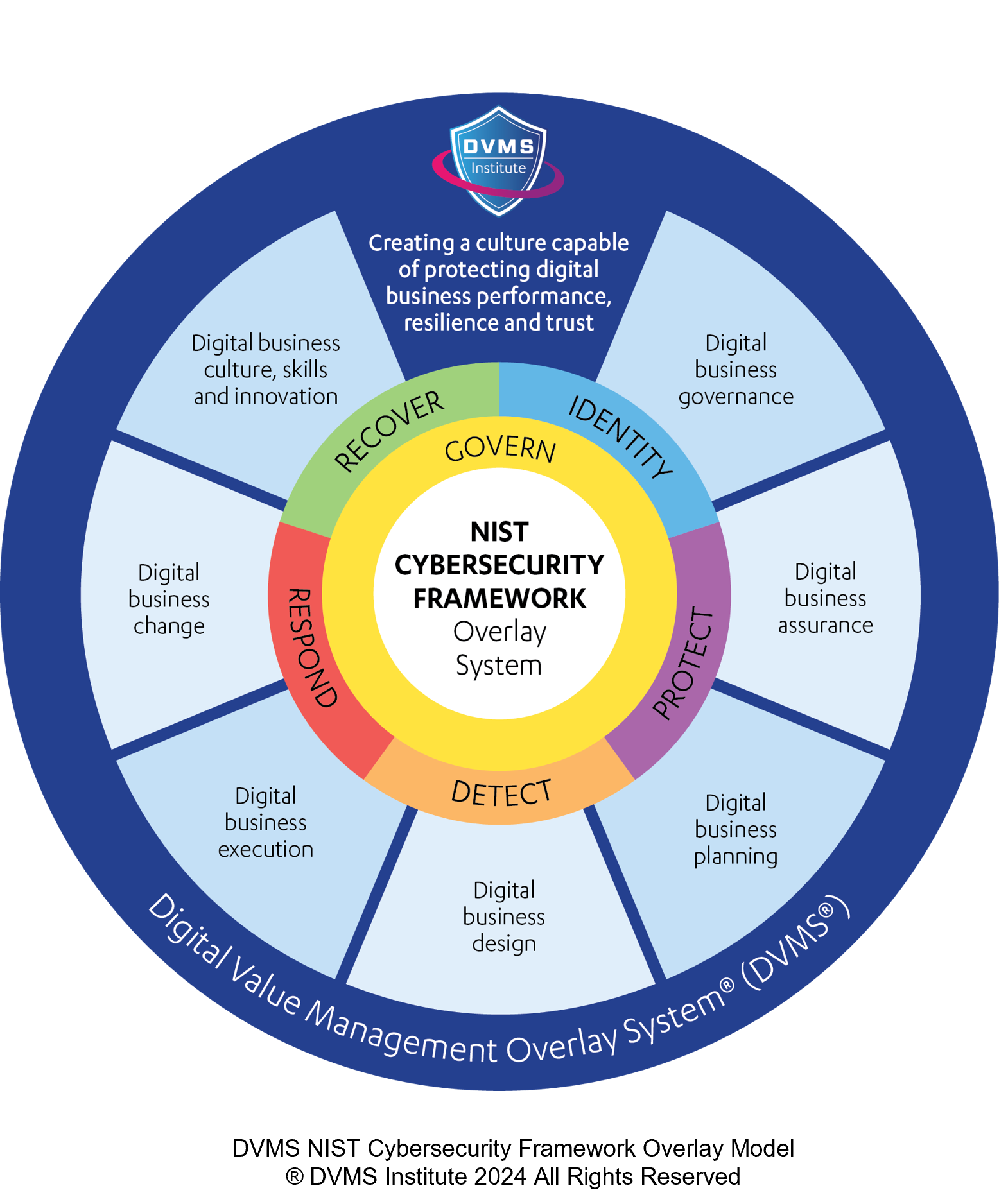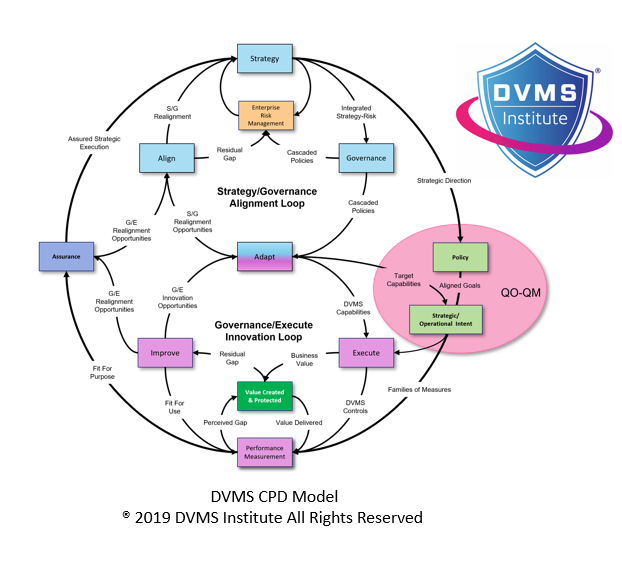The NIST Cybersecurity Framework as a Solid Foundation for NIS2 Compliance
Rick Lemieux – Co-Founder and Chief Product Officer of the DVMS Institute
The Network and Information Systems Directive 2 (NIS2) is a European Union regulation designed to strengthen the cybersecurity resilience of essential services. It imposes stringent requirements on organizations operating in critical sectors like energy, healthcare, finance, and transportation. To meet these demands, a robust and comprehensive cybersecurity framework is essential. The National Institute of Standards and Technology (NIST) Cybersecurity Framework (CSF) emerges as a strong candidate, providing a structured approach to managing cybersecurity risks.
The NIST CSF offers a flexible and adaptable framework tailored to the specific needs of organizations of varying sizes and complexities. It comprises six core functions: Govern, Identify, Protect, Detect, Respond, and Recover. This structure provides a clear roadmap for implementing effective cybersecurity measures.
Alignment with NIS2 Requirements
The NIST CSF closely aligns with NIS2’s fundamental principles and objectives. Both frameworks emphasize the importance of risk management, incident response, and continuous improvement.
Risk Management
NIS2 requires organizations to conduct regular risk assessments and implement appropriate security measures to mitigate identified threats. The NIST CSF’s “Identify” function facilitates risk assessment by helping organizations understand their assets, vulnerabilities, and threats. Moreover, the “Protect” function guides on implementing security controls to safeguard assets and reduce risks.
Incident Response
NIS2 mandates that organizations have robust incident response plans. NIST CSF’s “Detect” and “Respond” functions address this requirement by guiding the identification and effective response to security incidents. The framework encourages organizations to develop incident response plans, conduct regular testing, and maintain a culture of preparedness.
Continuous Improvement
NIS2 and the NIST CSF emphasize the importance of constant improvement in cybersecurity. The NIST CSF’s “Recover” function focuses on post-incident recovery and resilience, while the overall framework promotes a culture of learning and adaptation. By regularly reviewing and updating their cybersecurity practices, organizations can stay ahead of emerging threats and ensure ongoing compliance with NIS2 requirements.
Key Benefits of Using the NIST CSF
Adopting the NIST CSF can provide organizations with several significant benefits in their efforts to comply with NIS2:
Structured Approach
NIST CSF offers a clear and structured approach to cybersecurity, providing a roadmap for organizations to follow. This can help ensure that all necessary measures are implemented and that there is a consistent approach across the organization.
Flexibility
NIST CSF is highly adaptable and can be customized to fit different organizations’ needs and circumstances. This flexibility allows organizations to tailor their cybersecurity efforts to their unique risk profile and operational requirements.
Global Recognition
NIST CSF is widely recognized and adopted globally, making it a valuable tool for organizations operating in multiple jurisdictions. This can simplify compliance efforts and facilitate collaboration with international partners.
Continuous Improvement
NIST CSF promotes a culture of continuous improvement, encouraging organizations to review and update their cybersecurity practices regularly. This helps organizations stay ahead of emerging threats and ensure their security measures remain effective.
The NIST Cybersecurity Framework offers a solid foundation for organizations seeking to comply with NIS2 requirements. By providing a structured approach to risk management, incident response, and continuous improvement, the NIST CSF can help organizations strengthen their cybersecurity posture and protect their critical assets. Adopting the NIST CSF can be a valuable investment for organizations operating in regulated sectors and seeking to mitigate the risks associated with cyber threats.
About the Author

Rick Lemieux
Co-Founder and Chief Product Officer of the DVMS Institute
The DVMS Institute teaches organizations of any size, scale, or complexity an affordable approach to mitigating cyber risk to protect digital business performance, resilience, and trust.
Rick has 40+ years of passion and experience creating solutions to give organizations a competitive edge in their service markets. In 2015, Rick was identified as one of the top five IT Entrepreneurs in the State of Rhode Island by the TECH 10 awards for developing innovative training and mentoring solutions for boards, senior executives, and operational stakeholders.
® DVMS Institute 2024 All Rights Reserved



